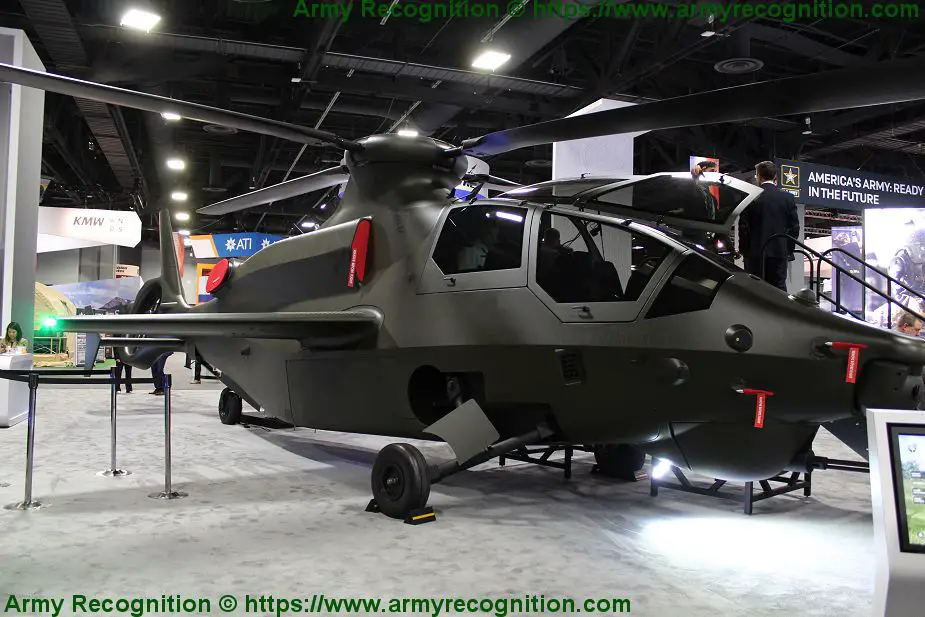Breaking news
AUSA 2019: Bell unveils full size mockup of Invictus 360 future reconnaissance attack helicopter.
American Company Bell Textron unveils a full-size mockup of its future attack reconnaissance helicopter Invictus 360 for US Army at AUSA 2019, the Association of United States Army defense exhibition that was held in Washington D.C. Bell has launched the development of the Invictus 360 to response to the US Army’s Future Armed Reconnaissance Aircraft (FARA) competition.

Bell Textron Invictus 360 future attack reconnaissance helicopter full-size mockup unveiled at AUSA 2019, Association of United States Army Defense Exhibition. (Picture source Army Recognition)
Bell Textron is in competition with four other companies including AVX Aircraft, Boeing, Karem Aircraft, and Sikorsky. The Invictus 360 will the replacement solution for the Bell OH-58D Kiowa Warriors.
The Future Attack Reconnaissance Aircraft (FARA) program was initiated by the United States Army in 2018 to develop a successor to the Bell OH-58 Kiowa scout helicopter as part of the Future Vertical Lift program. FARA is part of the Future Vertical Lift program and its procurement is largely modeled on the Joint Multi-Role technology demonstration program. The US Army released a draft solicitation on June 22, 2018, for reconnaissance helicopter proposals, with the intent to have two flying prototype designs by 2023, which will compete for the final award. On October 3, 2018, the Army released its formal request for proposal and outlined its proposed schedule.
Combining impressive agility and lethality with a modular open systems approach and sustainability innate to its design, the Bell 360 Invictus provides a low-risk path to fulfill the U.S. Army’s requirements for a Future Attack Reconnaissance Aircraft (FARA), providing security and battlefield situational awareness until the fight is finished.
The design of the Invictus 360 was unveiled on 1 October 2019, showing a two-seat tandem cockpit, with sighting optics and/or laser designator above a 20mm cannon gun turret at the chin position below the cockpit, mid-mounted stub wings below the shrouded rotor hub and four 12 m diameter rotor blades, an active horizontal stabiliser and a tilted and shrouded tail rotor. Missiles are mounted on integrated launchers. The rotor diameter is dictated by US Army requirements, which specified that maximum diameter for FARA candidates to allow the rotorcraft to fit between buildings on future battlefields. It will be powered by a single-engine derived from the Improved Turbine Engine Program (ITEP) by General Electric.
The US Army requirement calls for a cruising speed in excess of 330 km/h, and the 360 is intended to meet this; the 525 rotor system has been tested to exceed 370 km/h. The stub wings are intended to provide lift equivalent to approximately 50% of the weight of the aircraft at moderate to high speed. The combat radius will be 250 km with at least 90 minutes of time on station. It will use fly by wire control.
The Invictus 360 is fitted with internal and external weapons stores, including a 20 mm cannon mounted at the front, integrated munitions launcher, and support for air-launched effects integration.




























